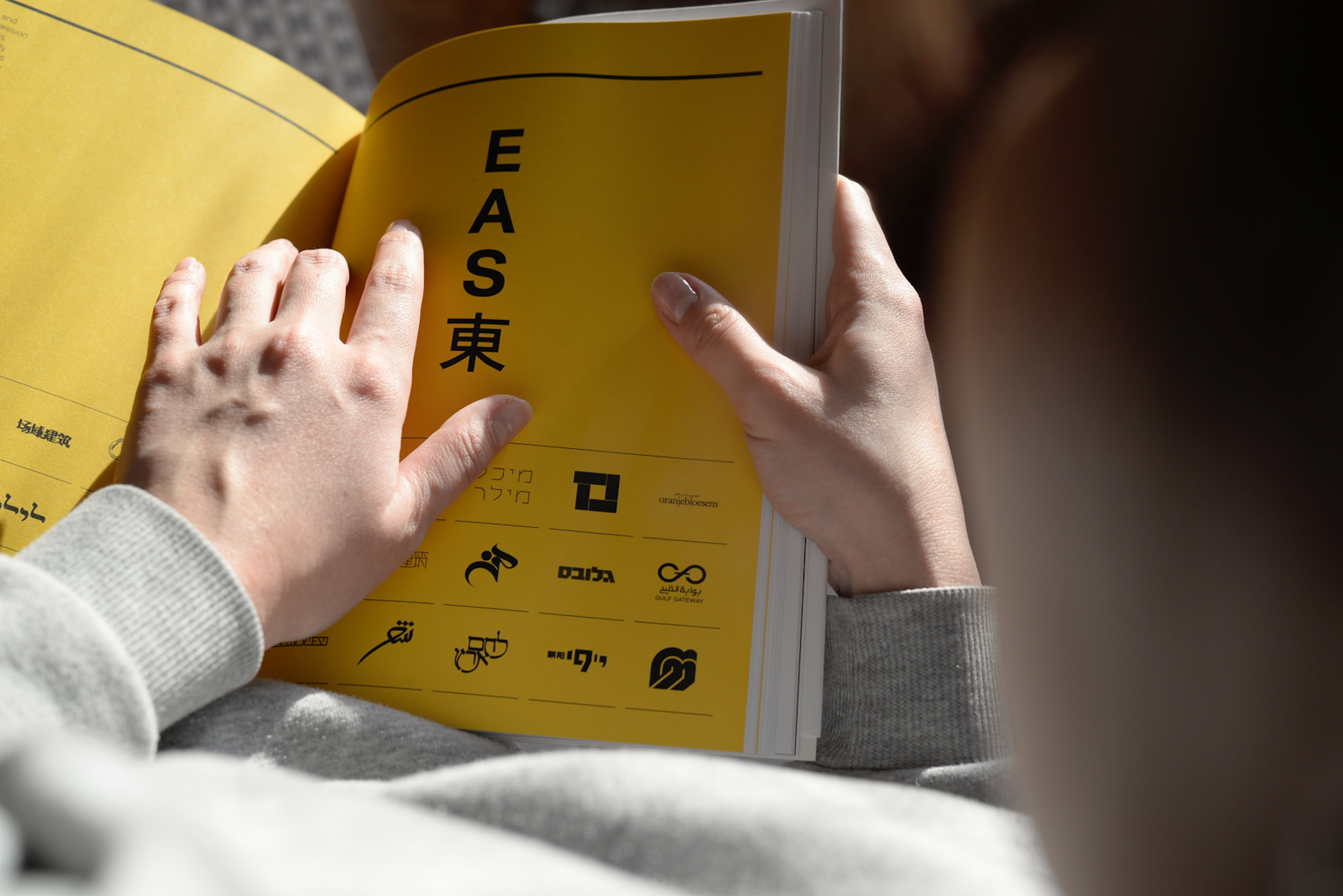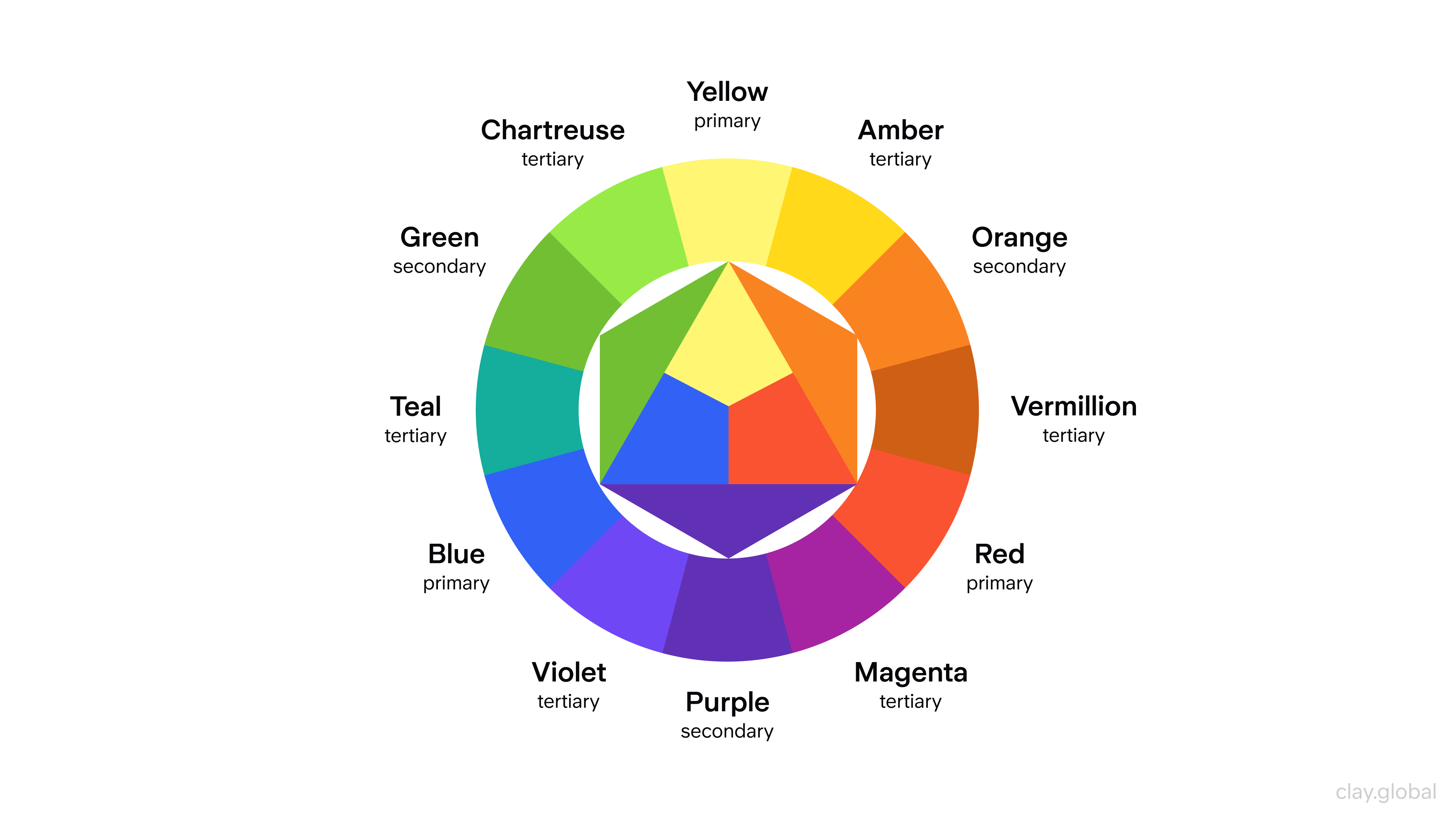A logo is often the first thing people notice about a brand — and first impressions matter. If your logo isn’t well-designed, it can send the wrong message and turn potential customers away. That’s why it’s so important to have a logo that accurately reflects your brand, and we’re here to help you make that happen.
In this article, we’ll walk you through the steps to improve your logo’s design. You’ll discover helpful tips, techniques, and insights into the process professional logo design agencies use to create logos that are both visually appealing and effective.
What Is a Logo, Exactly?
At its core, a logo is a graphic symbol or emblem that represents a company, product, organization, or idea. It’s a key part of branding, helping people quickly identify and connect with your business.
A logo often features the company name and may include an icon, slogan, or tagline — all crafted to capture the personality and values of the brand. These designs are typically created by professional graphic designers who know how to combine creativity and strategy to deliver a logo that makes a lasting impression.
Whether you’re starting fresh or refining your current design, a strong logo is essential for building brand recognition and trust.
Examples of Logos

A well-designed logo does more than just represent a brand — it communicates personality. Whether it’s trustworthiness, strength, creativity, or friendliness, a logo can express key traits that help form an emotional connection with customers.
One of the biggest strengths of a logo is its versatility. It can appear across a wide range of touchpoints — from websites and social media to packaging, signage, and marketing materials. That’s why it’s important for a logo to be simple, clear, and easy to recognize at a glance.
The most successful logos strike a balance between simplicity and meaning. With just a few shapes and colors, they manage to tell a story, evoke a feeling, and leave a lasting impression. That’s what makes them stand out — and stick in people’s minds.
What Is Logo Design?
Logo design is the art of creating a visual mark that reflects a brand’s identity and purpose. It’s a thoughtful blend of typography, graphic elements, color, and sometimes illustration — all working together to form a unique symbol that captures the essence of a company or product.
The goal is to create something that’s not just visually appealing but also memorable and instantly recognizable, especially in a crowded industry. A strong logo should stand out from the competition while staying true to the brand’s values and personality.
When designing a logo, there are several important factors to consider — like the target audience, current market trends, and what other brands in the same space are doing. The most effective logos tend to be simple but meaningful. They often feature distinctive shapes or layouts and use colors that align with the brand’s tone and message.
Versatility is key. A good logo should work well across a wide range of uses — whether it’s printed on business cards, displayed on a website, or featured on packaging. It must stay clear and consistent, regardless of size or format.
To set a logo design up for success, designers should start with research. That means understanding the brand, analyzing competitors, and identifying what makes the business unique. It also helps to explore how people emotionally respond to different colors and shapes, so the final design connects with the right audience in the right way.
A well-researched, thoughtfully crafted logo becomes more than a symbol — it becomes a vital part of the brand’s story.
Sky Logo Concept Research

A great logo should communicate your message effectively while making an impactful impression on viewers. For crypto and Web3 companies, a well-designed logo becomes even more vital, as it helps demystify the technology and establish credibility in a space where trust is paramount.
By keeping these points in mind when designing your logo, you can ensure your logo will stand out from competitors while expressing what makes your company unique.
Why Is Logo Design Important?
A well-designed company logo is important for branding and marketing efforts. According to a study by the University of Loyola, a logo is the most important element of a company's brand identity, followed by website design and social media presence.
Logo design is important to any business or organization's brand identity. A logo represents a company and its values, conveying the brand's overall message to customers and potential customers. It can convey professionalism, trustworthiness, expertise, and other qualities that can help a business stand out from its competitors. Simplifying complex ideas into a single image helps customers recognize a company's brand quickly and effortlessly.
On top of professional recognition, logos can also help build customer loyalty by providing them with a recognizable symbol they can identify with. In addition to recognition and loyalty, logo design is important for ensuring your branding is consistent across all mediums, from print materials to website content.
This helps create a cohesive look that will make it easier for customers to find you in their searches. Logo design is essential for businesses looking to make a lasting impression on their target audience and establish themselves as an authority in their field.
Why Is a Logo Important?

How Much Does Logo Design Cost?
Logo design costs vary depending on the complexity and scope of the project. Generally, a basic logo design can range from $50 to $500 dollars, while more complex designs with custom illustrations or drawings could cost up to $2,000 or more. The cost of logo design also depends heavily on the experience level of the designer and the quality of their work.
A professional designer with years of experience in logo design may charge more for their services than a newer designer just starting out. Additionally, incorporating animation into logos will usually increase their cost as well. Ultimately, it’s essential to consider all these factors when budgeting for a logo design to ensure you get a high-quality product that meets your needs within your price range.
Source: Kostya Markevich on Unsplash

Understanding Good Logo Design
Good logo design is a cornerstone of building a strong brand identity. A well-crafted logo can make your brand stand out in a crowded market, effectively convey your brand’s values and personality, and leave a lasting impression on your target audience.
When done right, a good logo becomes a visual shorthand for your brand, encapsulating its essence in a simple yet powerful image.
What Makes a Good Logo
A good logo is one that is simple yet impactful. It should effectively communicate your brand’s message without being overly complicated. Key characteristics of a good logo include memorability, scalability, and versatility.
A memorable logo sticks in the minds of your audience, making it easier for them to recall your brand. Scalability ensures that your logo looks great on a business card or billboard.
Versatility means your logo can be used across various mediums and contexts without losing its effectiveness. Importantly, a good logo should be original and unique, steering clear of clichés and overused design elements to stand out truly.
How to Improve Your Logo Design in 5 Steps
Do Research
You need to design your logo for your customers. Your logo needs to be received well by your target audience. One way to create a logo and ensure it is received well is by researching your target audience, competition, and industry.
Your logo needs to represent your brand. When people see your logo, they should better understand your brand. Before you design your new logo or start improving it, research how you can do this. What does your logo need to reflect your brand correctly? It would help if you answered this question.
The best logo designing company ensures enough time is spent on this step to make the logo as great as possible. You need to make sure you do the same. If you don’t know everything you must consider during this step and want more help, you should hire a logo designing agency.
Choose The Right Colors
Using the right colors in your logo can make all the difference. Different colors can invoke other emotions from people, so you need to use colors that conjure the feelings you want people to feel when they see your logo.
Understanding color psychology is critical, and if you don’t feel you know enough about it, you can hire a logo designing agency to help you. This is important, and if you have it in your budget, you should hire professionals to help you make the right decision for your brand.
Color Wheel

Look into what different colors represent and what they can make people feel, then decide what you want your brand story and logo to make people think. You should have already done this, but if you didn’t, then do it now. Once you have your answer, choose the colors that are the right fit for your brand.
For instance, the Wealth branding case illustrates the importance of color in conveying brand values and emotions. We carefully chose Wealth's color palette of vivid greens and yellows to reflect trust, growth, and a fresh approach to estate planning. Combined with a versatile typography system, these colors helped create a modern yet timeless brand identity that resonates with users emotionally, ensuring the brand stands out in the competitive financial services market.
Wealth logo by Clay

Simplify Your Logo
Your logo should not be complicated and cluttered. If you believe it is, it’s time to simplify it. This step can make a significant impact on your logo and how successful it is. If you haven’t considered making your logo more straightforward, now is the time.
There are many benefits to having a simple logo for your brand. The main reasons why popular businesses have opted to use simple logos include the following:
Memorability
It would help if you made your logo memorable. If you can’t do this, your logo design will not succeed. Simple logos are more special than complicated ones. So, your logo should be simple as well. Logos are a critical part of any successful business.
They are the face of the company and can have a lasting impact on customers’ memories. Logos must be memorable so customers associate the brand with positive feelings and experiences each time they see it.
Certain elements must be considered to make a brand personality or logo memorable. For example, colors should be carefully chosen as different colors evoke different emotions in people and can influence how people remember the logo.
Additionally, symbols are often used in logos as they make it easier for people to remember what a brand stands for. Logos featuring shapes or patterns are also helpful when creating an easily recognizable design that stands out.
Source: Giorgio Trovato on Unsplash

Finally, imagery is another crucial element when designing a logo, providing an instant visual connection between the company and its customers. Simple yet powerful images can effectively characterize brands and their products, making them more easily remembered by potential customers.
Overall, memorability is essential for any successful logo design and should be considered during the creative design process. By carefully crafting logos that contain meaningful symbolism and strong visual cues, businesses can ensure that their branding efforts will have long-term effects on customers’ memories.
Recognizability
When people see your logo, they should be able to recognize it instantly. If they can’t, then you need to redesign your logo. Most people will only glance at your logo and not pay too much attention; they need to remember it during this brief moment.
This is something that you need to consider when designing your logo. Logos are an essential part of a company's branding. A logo is a visual representation of a company’s brand identity design.
It needs to be recognizable so that customers can connect the brand and its products or services. Companies need to have easily recognizable logos so that customers can identify with their brand.
One way to create a recognizable logo is by using familiar shapes, symbols, and colors. Shapes like circles, squares, and triangles are familiar and can help people immediately recognize a logo.
Similarly, symbols such as stars or arrows can also be used in logos to make them instantly recognizable. Colors, too, can indicate something about the company – blue might suggest trustworthiness, while yellow might suggest optimism or warmth.
Source: Carlo D'Agnolo on Unsplash

The font chosen for a logo should also be considered carefully to ensure that it is easy to read and stands out from similar logos. Many companies use their own custom fonts designed specifically for their logo, which helps add another layer of recognizability since no other brand will use the same font style.
Finally, remember that the simpler your logo design is, the easier it will be for people to recognize it. You don’t want people confused because your logo has too much going on. Instead, you should focus on creating something simple but effective that stands out from similar logos and conveys the message you want people to take away about your brand.
Clarity
People shouldn’t need to figure out what your logo means. It should be apparent immediately. A simple logo will help make this possible, and that’s why you need to ensure your logo is simple enough for people to understand what it is trying to tell them instantly.
When it comes to logos, clarity is key. A good logo should be easy to recognize and remember, conveying the company's mission and purpose. Logos can be simple or complex, but all should have a clear identity that stands out.
Strong colors and bold lines can help create a memorable logo, while clever typography can add another layer of meaning and depth. The clarity in logos also means they are legible, even when scaled down to small sizes such as on business cards or websites.
Companies should ensure their logotype is easily read and understood at any size, avoiding overly intricate designs that may become illegible when reduced.
Professional designers know how to balance the right amount of detail with adequate space between elements so that the logo remains clear and recognizable no matter the size. Overall clarity in logos will ensure that audiences understand the message being communicated by the brand quickly and effectively.
Designing For Mobile
When designing your logo, you need to think about mobile phones. Your logo must be designed to look great on mobile phones. This is easier if you have a flat and straightforward logo design, as it can be adjusted to look good on mobile and other platforms.
More people are using the internet on their mobile phones than before, meaning logo design on mobile phones needs to take priority. You don’t want your logo to look blurry or pixelated on smaller screens.
If you need help designing for mobile phones and the different screens, people will be using. You should hire one of the best design companies to ensure professionals design your logo.
Look At Successful Logos
Look at the countless logos online for inspiration to help you design a perfect logo that will look great and be received well by your target audience. If you want to improve your logo, you need to look at some of the best logos in different industries and find out why they are so popular.
Once you know what makes a logo great, you can use that knowledge to improve your own logo. Avoid mistakes made by other logos and take inspiration from what makes certain logos successful and popular.
The Jamba logo features a colorful swirl that represents movement, energy, and the blending of fresh ingredients. Its vibrant colors and modern, clean typography reflect the brand’s fun, healthy, and approachable identity — perfectly aligning with its smoothie-focused mission.
Source: id.wikipedia.org

The Balmain Paris logo is a refined symbol of luxury and heritage. Featuring bold, modern typography with a clean sans-serif font, it communicates strength and sophistication. The inclusion of "Paris" emphasizes the brand’s French roots and high-fashion legacy, while the minimalistic black-and-white palette reinforces its timeless elegance.
Source: 1000logos.net

The Guardian logo reflects the publication’s bold and authoritative voice in journalism. With its distinctive lowercase "g" and classic serif typography, the logo balances modernity with tradition. Its navy-blue color conveys trust and credibility, aligning with the brand’s mission to provide independent, reliable news. The clean, simple design ensures clarity and strong recognition across digital and print platforms.
Source: theguardian.com

The RadioShack logo is a nostalgic nod to the brand's legacy in consumer electronics. Featuring a bold, red “R” encased in a circle, the design is simple yet instantly recognizable. The choice of red conveys energy and innovation, while the clean sans-serif typography reflects a straightforward, no-frills approach — fitting for a brand long associated with gadgets, components, and DIY tech. Despite evolving with time, the logo retains its core identity, symbolizing RadioShack’s enduring presence in the electronics retail space.
Source: radioshack.com

The Worst Logo Redesigns of All Time: When Brands Get It Wrong
A company’s logo is its identity — people instantly recognize and connect with it. But sometimes, brands try to "modernize" their look and end up with a bad company logo that confuses or even upsets their audience. This logo design fails to show that even the biggest brands can make huge mistakes when rebranding.
Let’s look at some of the worst logos ever — and what we can learn from them, from ugly logos to controversial logos.
1. Gap (2010) – A Redesign Gone in 6 Days
In 2010, Gap made one of the worst logo changes by replacing its classic blue-box logo with a plain, boring design that looked like something from a free-font website.
Gap Logo Rebrand 2010

Fans hated it so much that Gap scrapped the new look within six days and returned to the original. This is a perfect example of a bad logo redesign that nobody requested.
2. Tropicana (2009) – A $30 Million Mistake
Customers were left confused when Tropicana changed its packaging and logo in 2009. The company removed its recognizable orange-with-a-straw image, replacing it with a generic, text-based design.
Tropicana Rebrand

The result? A logo failure cost them $30 million in lost sales within weeks. They quickly reverted to the original look, proving that not all "modern" rebrands are a good idea.
3. Animal Planet (2008) – What Happened Here?
Animal Planet's logo made sense: an elephant and a globe—both symbols of nature and wildlife. But in 2008, they replaced it with a slanted, jagged text design that looked like a bad PowerPoint font choice. Many viewers felt disconnected from the new branding, making it one of TV's most poorly designed logos.
Animal Planet Rebrand 2008

4. Pepsi (2008) – The $1 Million "Smirk"
Pepsi spent $1 million redesigning its logo, but it was one of the most controversial logos in recent history. The new design altered Pepsi’s iconic globe into an off-balance "smile" shape, but many thought it looked like a bloated original version. This unnecessary logo change left people scratching their heads — and questioning if it was worth the price tag.
Pepsi Logo Rebrand Example

5. Cardiff City FC (2012) – A Rebrand That Angered Fans
Imagine being a die-hard football fan, only for your team to completely change its identity overnight. That happened in 2012 when Cardiff City FC abandoned its traditional bluebird logo and switched to a red dragon.
Cardiff City FC Logo Rebrand

Fans were outraged, calling it one of the worst logos of all time in sports. After years of backlash, the club partially brought back the bluebird — showing that listening to your audience matters.
6. London 2012 Olympics – An Expensive Eyesore
The London 2012 Olympics logo was meant to be bold and modern. Instead, it looked like a chaotic puzzle of random shapes. Some even compared it to inappropriate symbols.
London 2012 Olympics Logo

The worst part? The ugly logo cost nearly $800,000 to develop. It remains one of the most controversial logos ever designed.
What We Can Learn from These Logo Fails
These disasters prove that not all logo redesigns are a good idea. Here’s what they teach us:
- Don't fix what isn’t broken. Many of these brands already had recognizable, successful logos. Their bad logo redesigns only alienated loyal customers.
- Test before launching. A lot of these worst logo changes could have been avoided with better market testing.
- Minimalism isn’t always better. A "simplified" bad company logo can sometimes strip away what made the original memorable.
- Listen to your audience. Tropicana, Cardiff City, and Gap paid the price when they ignored customer reactions.
From bad company logos to ugly logos that went viral for the wrong reasons, these examples prove that branding mistakes can be costly.
If you’re thinking of redesigning your logo, take a lesson from these worst logos ever — and make sure your audience is on board before you roll it out.
Read More:
Conclusion
Following the steps in this article will help you improve your business logo’s design and increase the likelihood of it being successful and correctly representing your brand. Creating a successful logo may take time and changes, but it is worth the effort.
You must ensure your logo is excellent so your branding makes a positive first impression on people. If your budget allows, you should hire a design agency to help you improve your logo. This will be worth the investment and will enhance your business’s branding.


About Clay
Clay is a UI/UX design & branding agency in San Francisco. We team up with startups and leading brands to create transformative digital experience. Clients: Facebook, Slack, Google, Amazon, Credit Karma, Zenefits, etc.
Learn more

About Clay
Clay is a UI/UX design & branding agency in San Francisco. We team up with startups and leading brands to create transformative digital experience. Clients: Facebook, Slack, Google, Amazon, Credit Karma, Zenefits, etc.
Learn more



